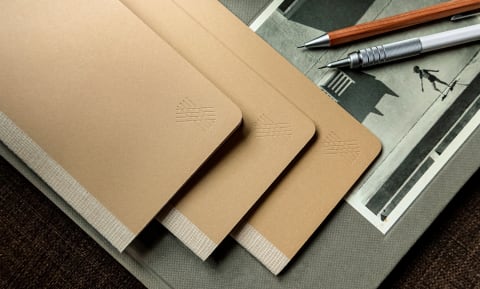
We have a new paper.
And new pocket notebooks. And a lot of other new things. It's a 4,000 word newsletter. Sorry.
Hello again! Daryl here. I hope this letter finds you safe and well.
It's been a while since last we spoke, and the atelier has been well busy in the interim — so busy, in fact, that this is going to be our longest-ever newsletter, from a company already infamous for its ridiculously detailed missives. For this I can only apologise.
If you're subscribed to our letters, though, then I know that you don't shy away from a reading challenge. And there's going to be something for absolutely everyone in this letter, from exquisite Labs diaries to more notebooks for the everyday. Oh, and a brand spanking new paper, customised in-house by the atelier.
Wait, what? Musubi is doing its own paper? Hell, yeah, we are.
So, to it, then, because we have a great many things to cover. We'll start with a quick recap, and then see what new things we've got in store. Let's dive in.
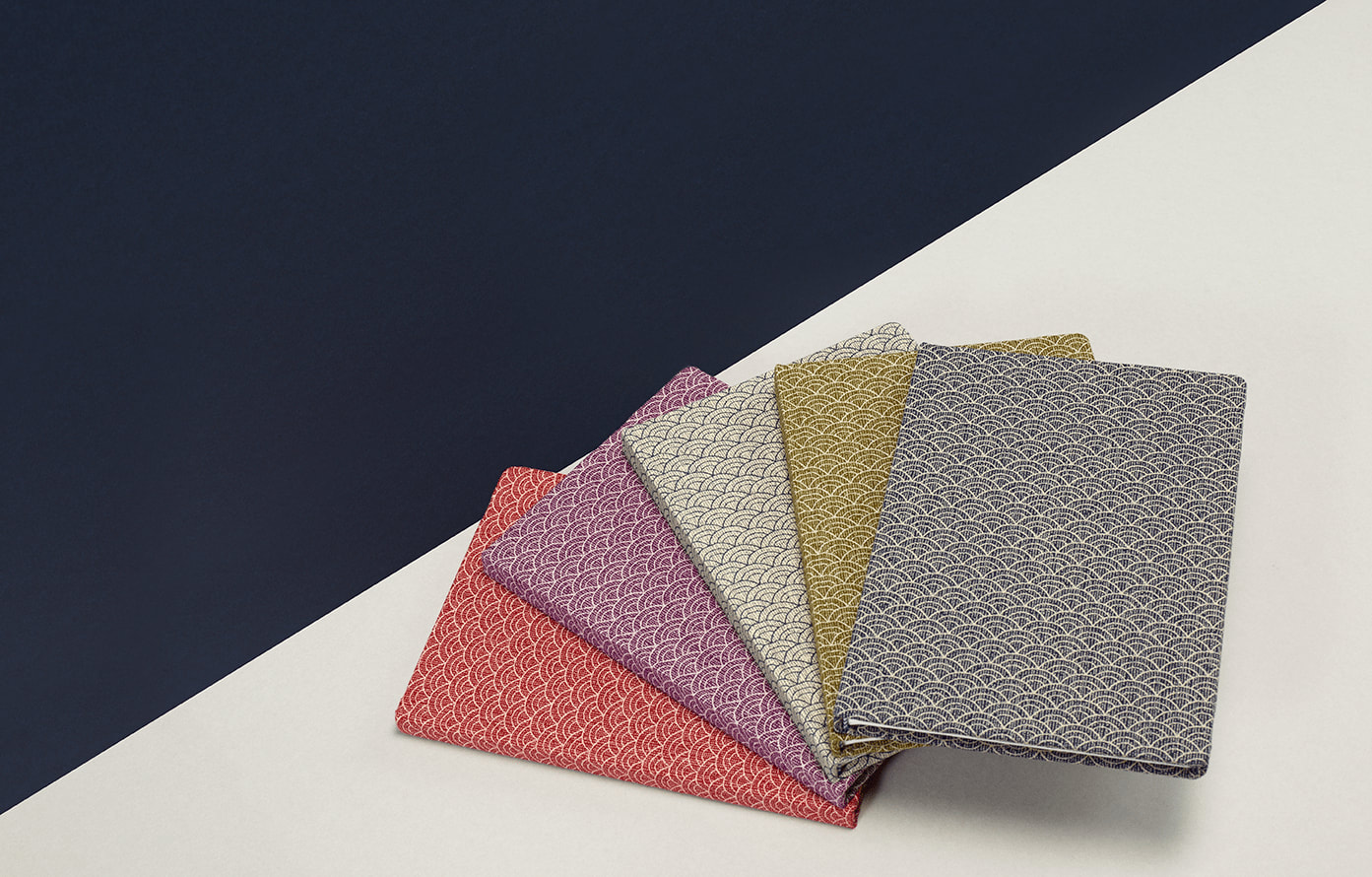
Seven years of service
This year, Musubi enters its seventh year of operations.
It's not a milestone those of us here at the atelier take lightly. When I started this company back in late 2016 (and my goodness, that seems like a long time ago now, doesn't it), my goal was to demonstrate that we could operate a business grounded in social consciousness and the welfare of our people, whilst still making enough to pay fair wages and keep the lights on. But in those nascent days, the question of whether our business model was even viable was very much an open one.
I knew that making handbound journals alone would not sustain us, and that we would eventually have to expand into other areas like pen cases and more affordable notebooks. But we simply hadn't the resources nor the market recognition to do anything else for a good few years, so we had no choice but to grit our teeth and lose money year after year, slowly putting in the work and building the reputation necessary to make our mission viable in the long run.
The truth is that running a social enterprise is a tricky, capricious, risky affair. You need to keep your values at the forefront of what you do, but you also need to seek commercial viability within the confines those values place upon you. These opposing forces aren't always easy to balance, and for every successful moment we've had, there've been plenty of failures and plenty of darknesses.
Nevertheless, with your support, here we stand seven years on. I'm grateful for all the faith and trust you've put into Musubi over the better part of a decade. It has allowed us to cleave to our original values, without compromise: social uplift, fairness of compensation, and the equitable treatment of our people. The atelier's yearly revenue is stable. We've managed to expand into areas beyond our original ambit. And we have a base of loyal customers like you who believe in what we do, and are willing to support a small team's very naive dream of trying to make the world we all live in a better place — especially for those who need our help the most.
On behalf of all my artisans, I thank you from the bottom of my heart. And I promise you: it only goes forward from here. We have so many wonderful things in the pipeline, all very beautiful, and always, always centred on our core principle of lighting candles in the dark.
Shall we take a look at some of these new things, then?
Washi outside, washi inside
This is the first big release from our handbound division in a while, so I thought we'd pull out all the stops with this one and do something that showcases the atelier's inimitable blend of traditional craftsmanship and modern production.
Without further ado, then. Introducing the Japanese washi and cotton diary, with Japanese calligraphy washi paper; or, as it's known internally, the washi-washi diary:
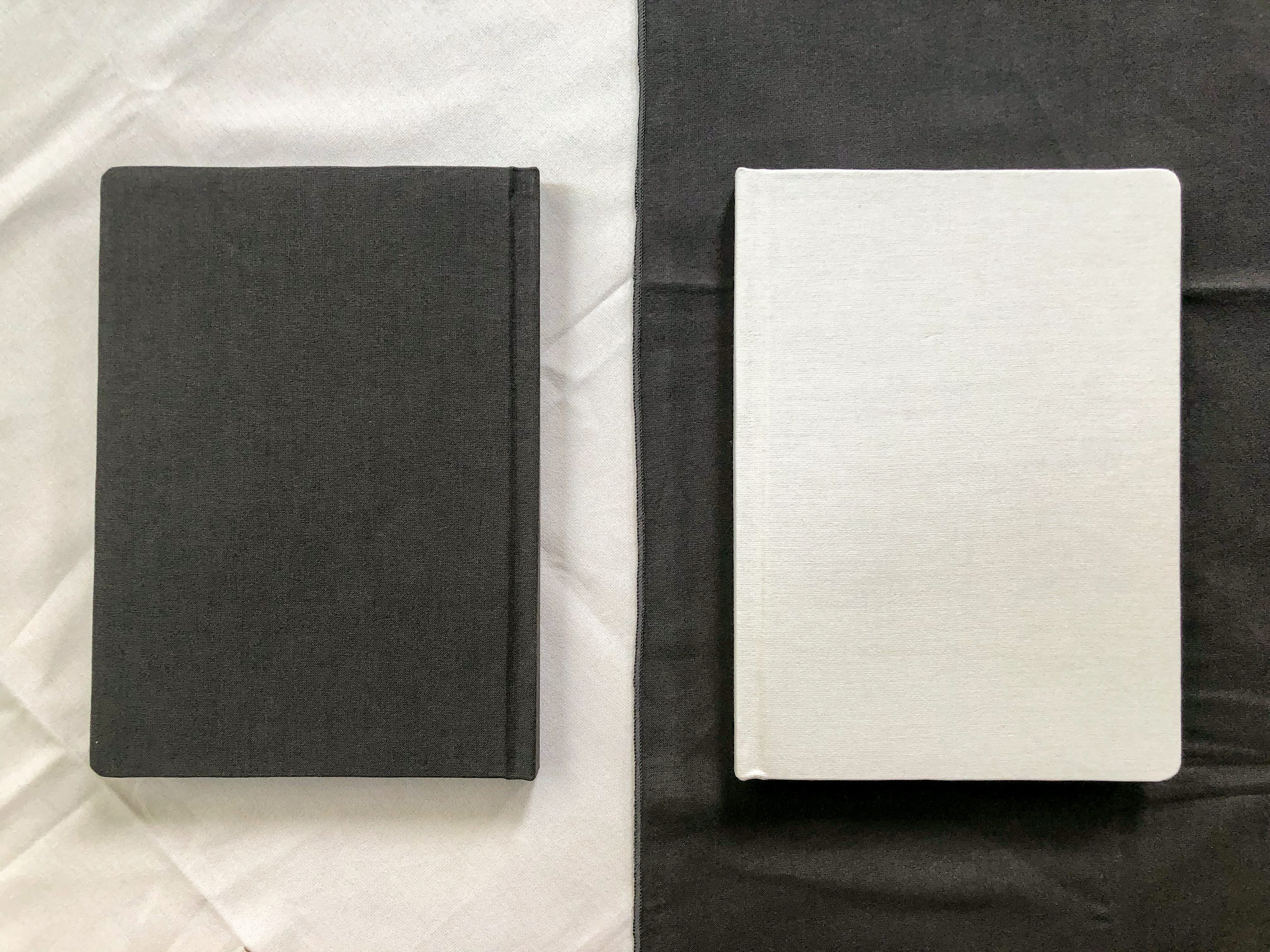
On the outside of the diary? A specially made washi-cotton blend, featuring a yarn woven from 50 per cent authentic Japanese washi paper and 50 per cent organic cotton. The paper and cotton fibres are interlinked during the spinning process to reinforce each other before being dyed and loomed.
The final product is an extremely light but durable blended fabric with the combined properties of paper and cotton: slightly sandy to the touch under one's hand, and rich with sensation, with the durability of woven cloth.
On the inside, the same combination of traditional craftsmanship and modern production applies. We've selected a traditional Japanese calligraphy paper made with the modern firming required to allow it to pass via machine, resulting in an art-focused surface that allows you to play with washes and watercolours alike.
Wetter mediums will spread on the page as they would with traditional Japanese brush and ink paintings, giving you the dynamism you want from brushwork, while drier mediums like pencils allow you to control this spread and create outlines for your work. I encourage you to play around with the different tools you have on hand and see what transpires.
As with other experimental releases, we don't have a whole lot of these, so please forgive me if you don't manage to snag one before they're all gone. The extremely artisanal nature of the fabric in this release made it impossible for us to produce any more than we did.
What we're about to announce next, however, is in a completely different wheelhouse — and there's plenty enough to go round.

Musubi, in the palm of your hand
Whether on the workshop floor, or in Musubi's offices, we've often had to take very quick notes, or document things on the fly — and pocket notebooks have been a godsend for this particular purpose.
When the atelier first started out, we used to handsew our own pocket notebooks for internal use, but this quickly became unsustainable as it drew down on very limited artisan time that would be better spent making journals to keep up with all your orders. And I've not been particularly satisfied with what's out there on the market, particularly in terms of durability and paper quality.
Many of the pocket notebooks available today are held together either by metal staples, or though a single line of thread, saddle-stitched down the spine, which limits how robust they can be while banging about in your pockets, or in your bags. And they're often hit-and-miss when it comes to compatibility with different writing instruments: some will be very good with pencils, but particularly awkward with fountain pen ink; others will exhibit severe bleedthrough when you write on them with anything other than a ballpoint.
The core of the issue, I think, is that pocket notebooks are low margin, volume plays: they cannot be made for a high cost because they cannot be sold for a high price, and makers also have to control construction costs enough to allow retailers to make their usual 50% margin off the top. The realities of the market limit what a maker can do whilst still turning a reasonable profit.
However, the atelier is in a position to break these limitations. We make our own notebooks and sell them directly to you, cutting out the middleman — which means we don't have to leave any room whatsoever for retailer margins. And pocket notebooks are not our main product line, which in turn means we don't have to make a lot per pack. We only have to make a little from you adding a pack or two to your regular Musubi order.
These factors combine to give us a significant amount of headroom in terms of costing. And we can pour all of that headroom into construction cost, allowing us to spend a significantly higher amount per line item on the specification sheet without increasing the price at which these pocket notebooks have to sell.
So that's what we did. Introducing the atelier's new pocket folio notebook:
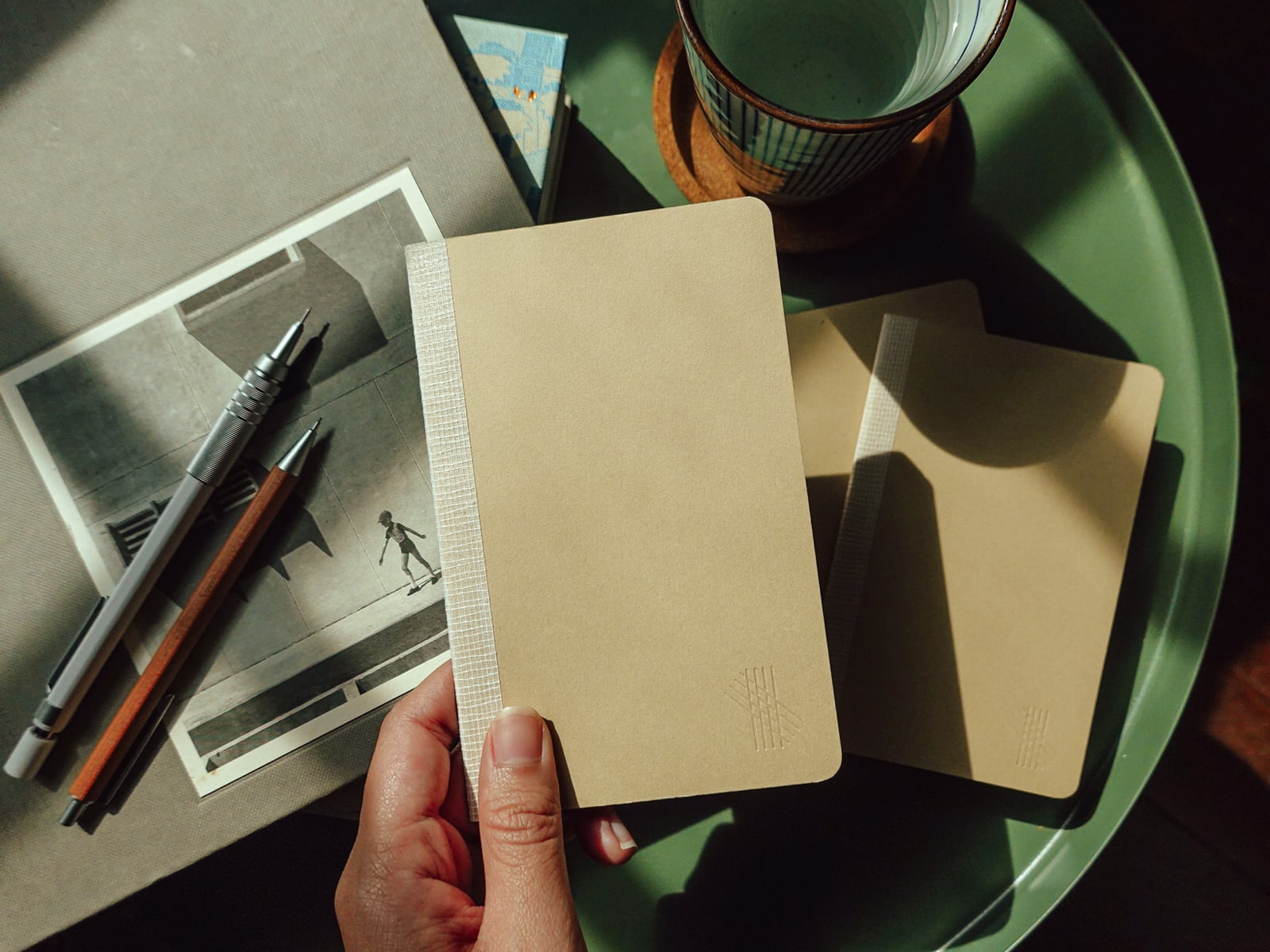
Pocket notebooks should be portable. They should be durable. And they should work with as large a variety of instruments and implements as possible, because you never know when inspiration will strike and what you'll be carrying when it does.
So we overengineered the shit out of these notebooks in all three of these spaces.
First, to portability. Our pocket folio notebook features the same slimline dimensions as our handbound mini journals — slightly narrower than the usual A6 format, these slip naturally into jean and jacket pocket alike. And they have a neat 48-page setup, providing enough space for your notes without bloat or bulk, whilst still allowing you to write comfortably with the notebook held in one hand.
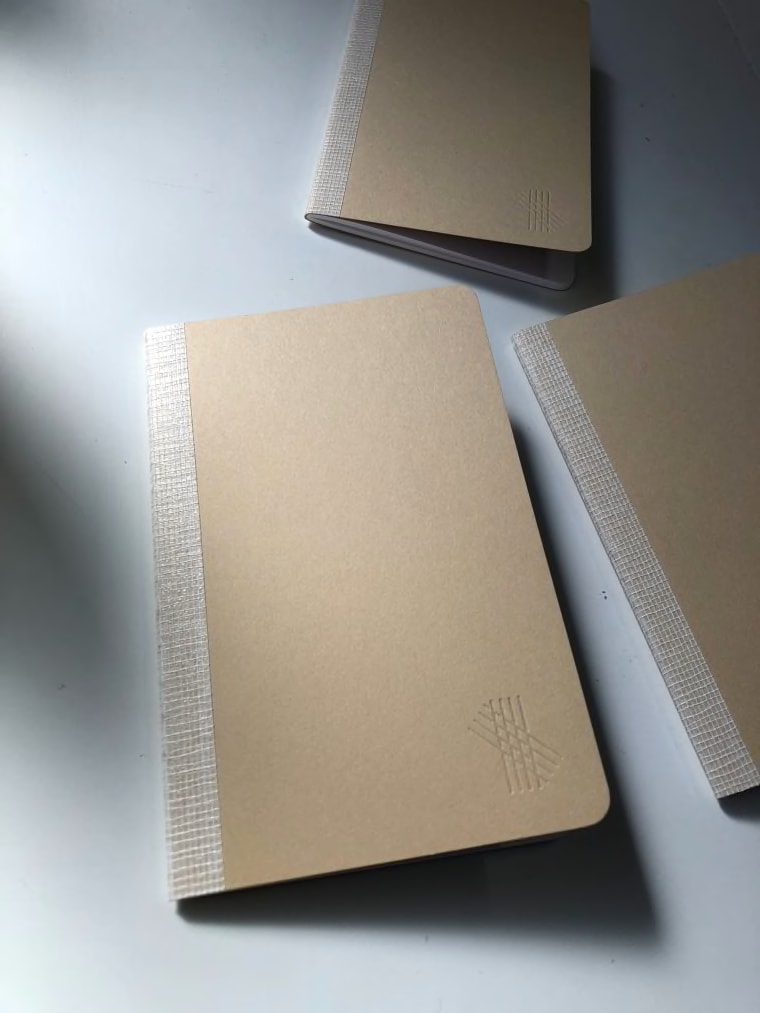
Next, to durability. We start by stitching our notebooks with the same high-quality thread you know from our A5 folios — but we then further reinforce this binding with a durable gauze which shields the binding down the entire length of the spine. The gauze protects the outward-facing thread loops on the spine, preventing them from catching on anything in your pockets or your bags, which significantly ups the durability quotient of these notebooks.
We've paid special attention to the cover, too. Instead of the kraft or flexible paper covers used in typical pocket notebooks, we've installed a high-density Japanese cardstock that looks like the former but performs wonderfully differently — with higher water resistance, a beautiful surface texture, and improved resistance to dogearing and shredding.
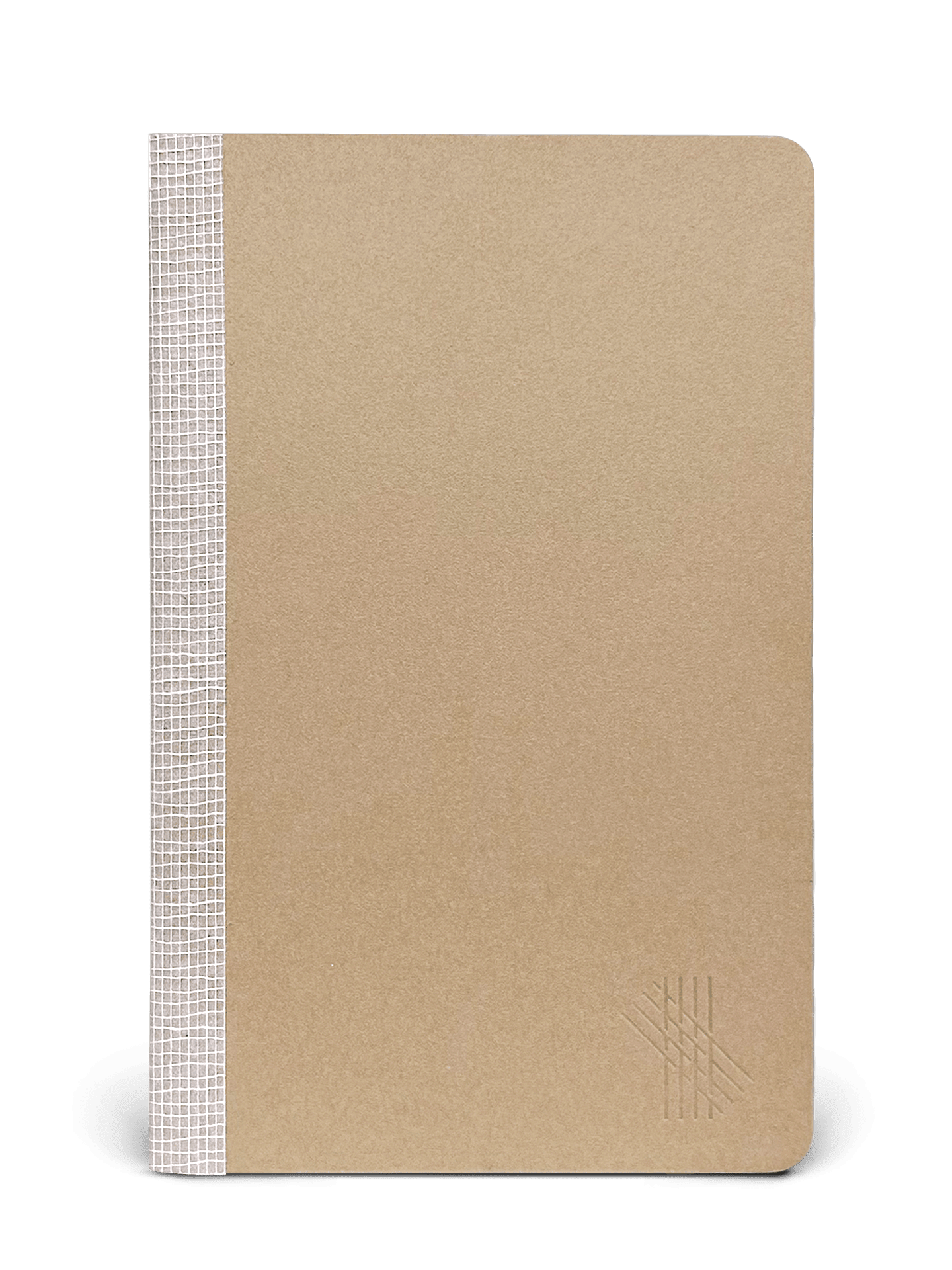
And finally, this wouldn't be a Musubi without our signature obsession over paper quality. We saved no money here, either: the choice is Spica Bond, the same high-quality, 25% cotton paper you've seen in previous Musubi Labs handbound releases. This will stand up to fountain pens and it will stand up to pencils, so scribble and jot on it with whatever instruments you like.
Oh, and because we're either stupid, crazy, or both, we came up with an entirely original packaging system for these notebooks. Because why not?
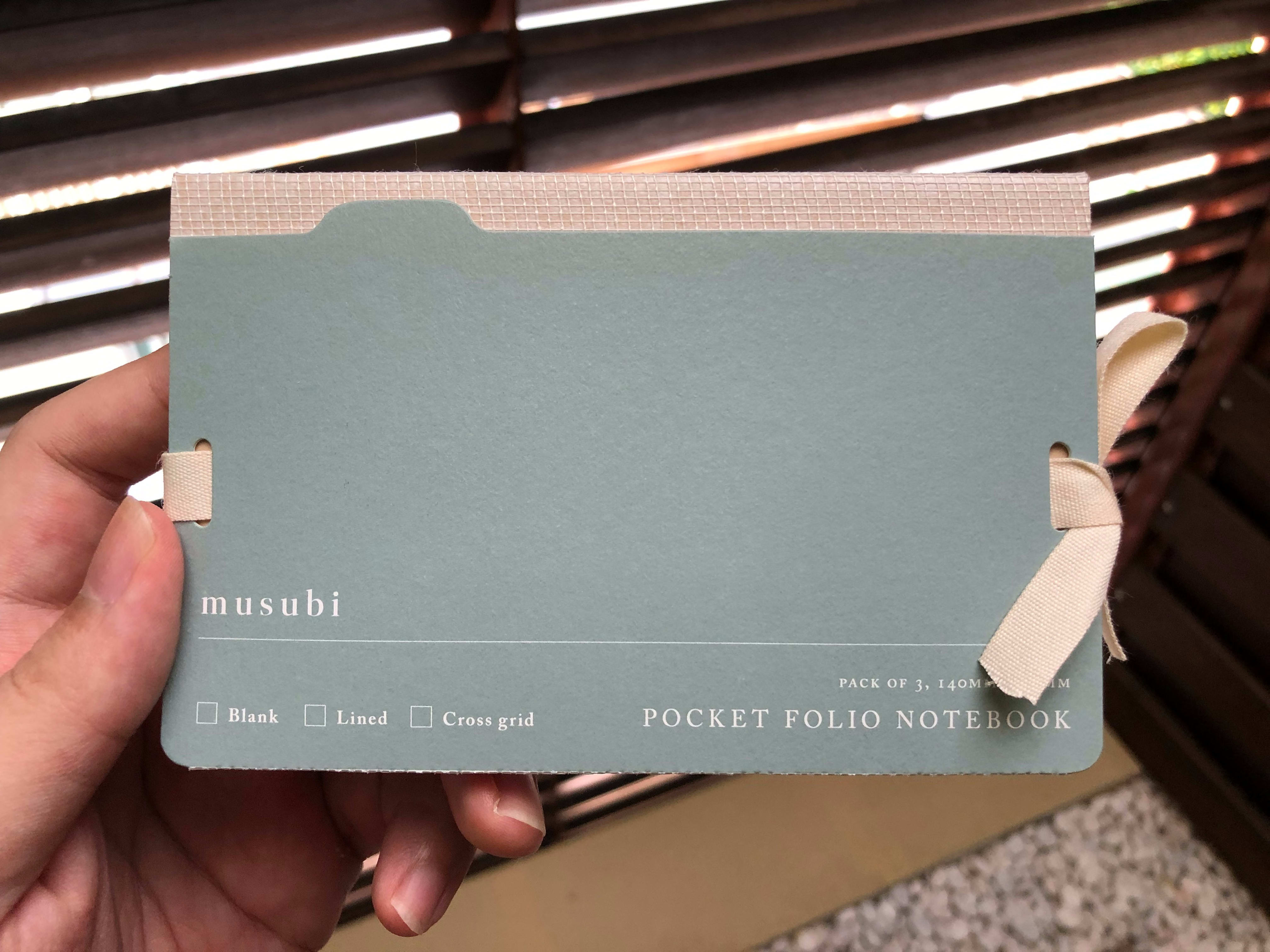
Say hello to our custom-made perforated index card and ribbon system.
Your notebooks come packaged in a connected set of two index cards with a ribbon tie between them. Separate the cards along the perforated lines, then use them to classify your pocket folio notebooks on your shelves or in your boxes, so you can sort through them quickly. And you can reuse the ribbon tie to bundle multiple notebooks together between these cards for easy transport and storage.
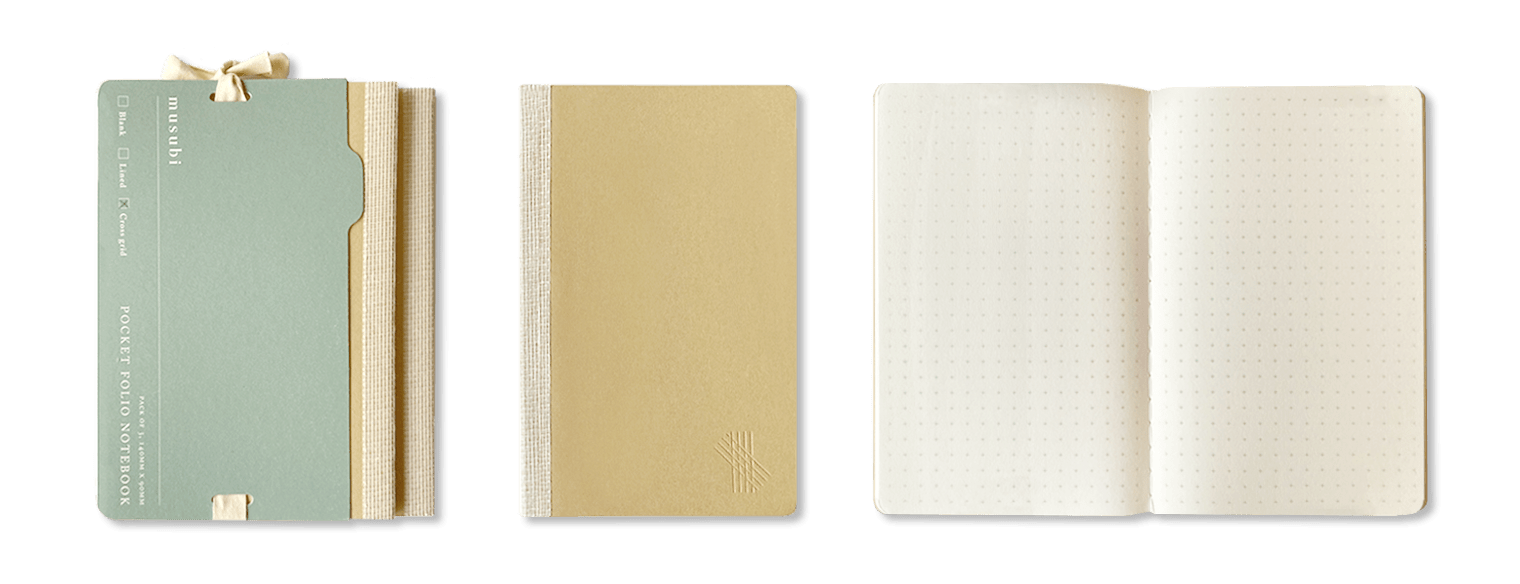
Our new pocket folio notebooks are set up as a three-pack in our usual formats: blank, lined, and cross grid. Or you can get a snack pack that contains one of each, if you'd like to try out all the rulings at once. The price point on these is also pretty aggressive; I've positioned these to catch out competitor products on the market, and I think you'll be pleasantly shocked by how affordable these are.

These are available right now on the website, and are a permanent addition to the Musubi lineup. I hope you enjoy using them to notate and create alike.
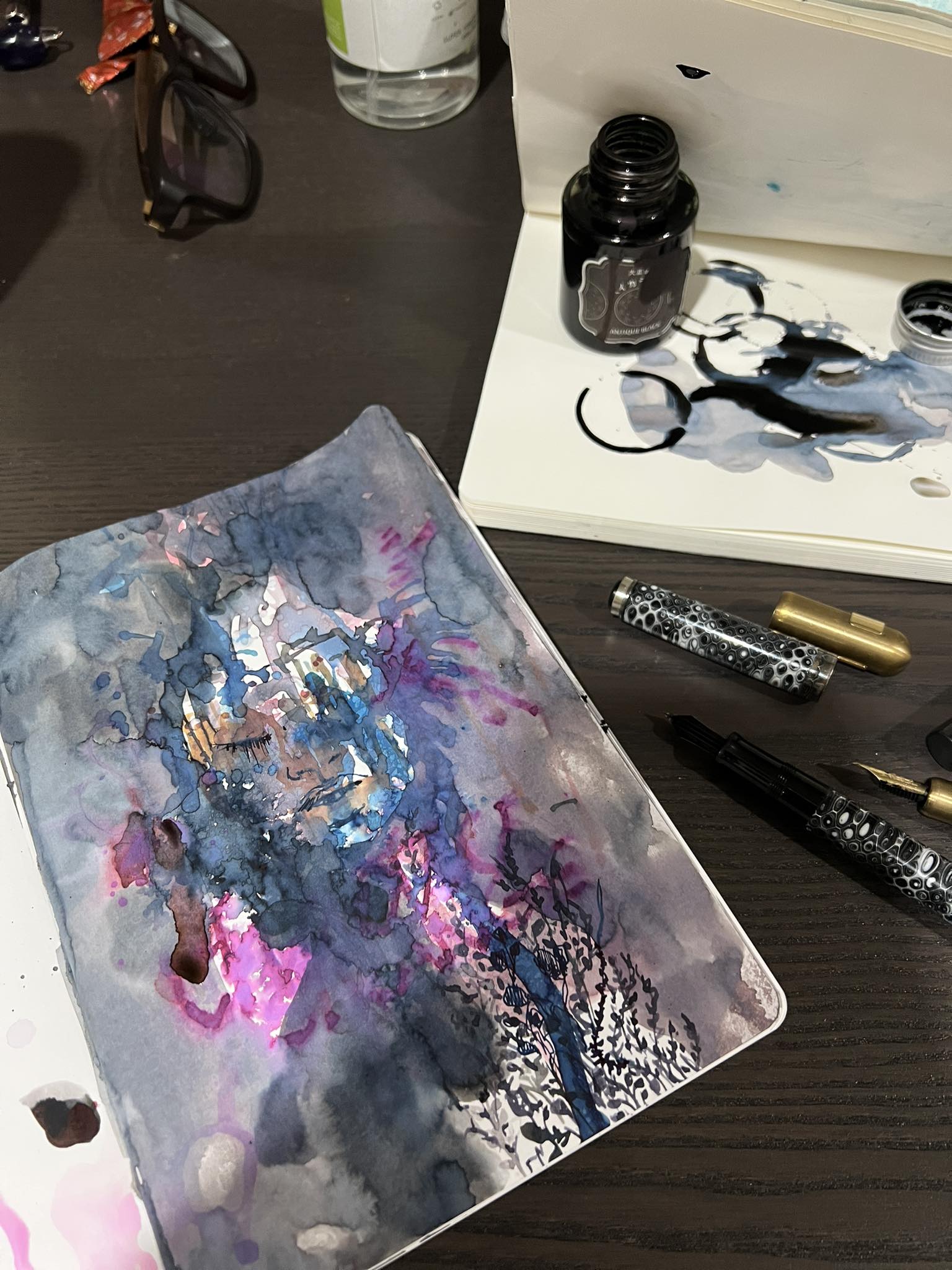
A new paper, and a new way of thinking about paper
Alright, we've gotten through the handbound release for this drop, as well as our new pocket folio notebooks. So now it's time for the main event.
Let's not bury the lede. Say hello to the atelier's first release under Project Tabula, the culmination of almost a decade's worth of in-house research and development into the properties of fountain pen-friendly paper. This has been an unbelievably long time coming, and I'm both excited and terrified to show all of you what we've been cooking up.
As regular readers of our letters already know. for years now we've championed the idea of taking paper — with all of its chemistry, performance, and corresponding analog foibles — as seriously as a nibmaster might tune nibs, or an ink blender their inks. After all, paper is part of that very trinity which decides how your words and your art look on the page — so why shouldn't it be treated with the same weight? And I've always made clear that there is no one paper for all uses; that your use case defines your choice of paper, and that the paper you pick should fit that use case.
We're not a billion-dollar company with our own paper mill, so our ability to make our own paper is naturally curtailed. But what if we could use our in-house expertise, built over years and years of learning the ins and outs of how paper works, to modify the very properties that make paper perform one way or another, till we got exactly the right kind of characteristics for the use case we were to specify?
Enter Project Tabula.
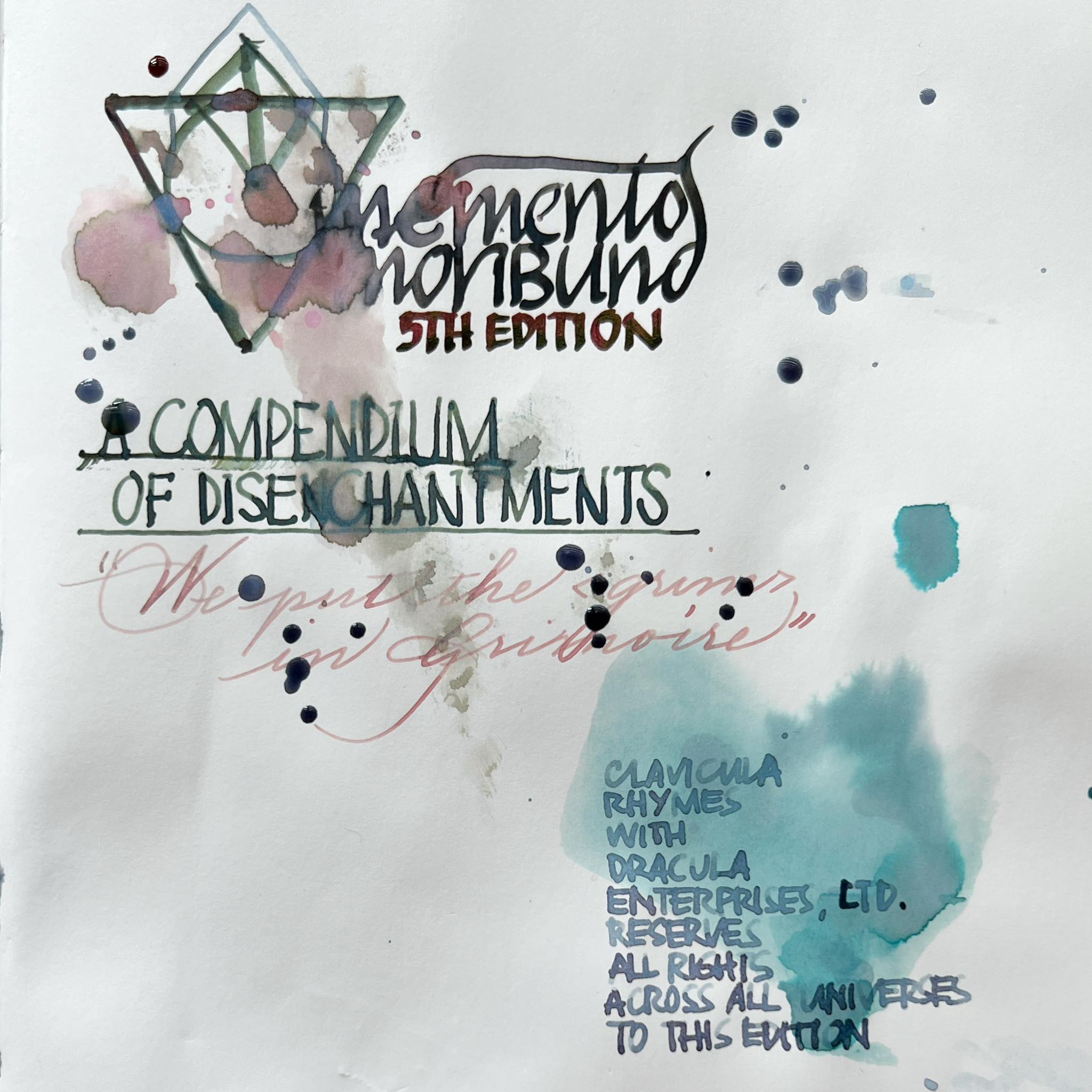
What is Project Tabula, exactly? Well, it begins with a base paper made by a traditional, high-quality Japanese mill. We select for certain properties we want to emphasise — for instance, colour performance, or ink resistance. But then we begin to modify the bits of it we don't like.
Traditionally, a paper leaving the mill is seen as being in its optimal state, with the goal of any handling following the papermaking process to keep it as stable as possible, and in as similar a condition as possible to the day it left the factory floor. Project Tabula turns that thinking on its head, by treating paper the same way an artist might spike their canvas or a ballet dancer might deform their flats: in other words, we introduce a deliberate, predetermined set of stressors designed to shape this base paper into a customised tool for a specific purpose.
From the chemical composition of the ink used to print the rulings on our notebook pages, to the pressure on the finishing rollers used to smooth the papers before binding, to the intentional gradation of high and low humidities in specific sequences to alternately modify the brittleness and suppleness of a paper's internal fibres; we test through various conditions in order to develop a proprietary set of customisations and handlings unique to every base paper. The aim is to make each paper in this project perform optimally to a single, well-defined set of requirements — the use case we mentioned earlier.
The end result? A hyperspecific paper in each release, built upon a reliable platform, then tuned to a particular group of users who seek the perfect fit for their needs.
Now that you understand the conceptual thinking behind Project Tabula, let's talk about what we actually did for our first release.
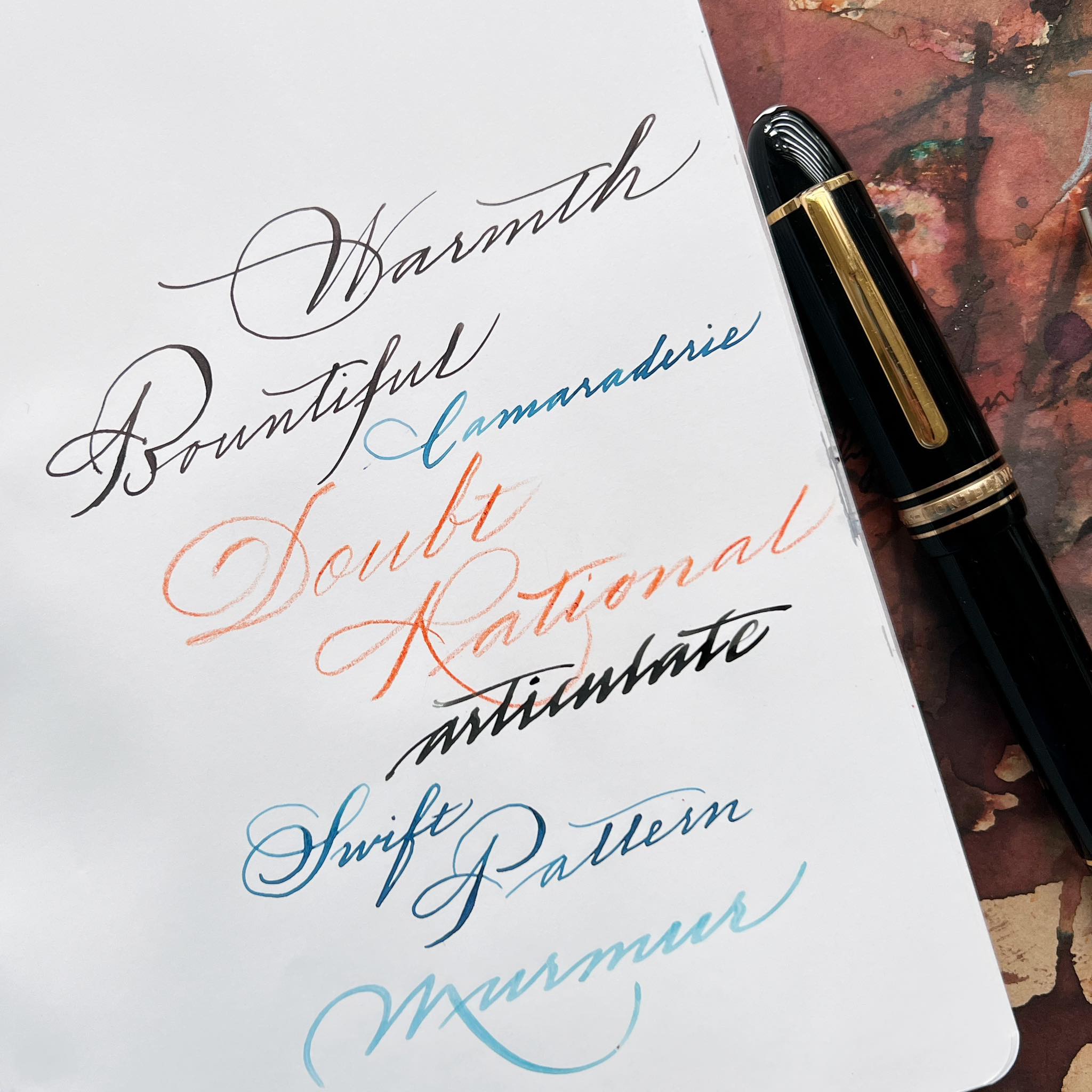
For its first research and development project under the Tabula framework, we turned to that style of paper now ubiquitous in modern fountain pen-friendly notebook making: the modern Japanese microcoat.
Cosmo Air Light, and many of the other variants of this style of paper, are popular on the market today, and for good reason. They exhibit little bleedthrough despite their incredible colour performance, bringing out the shading and sheen you want to see in your multichromatics and other unique inks.
Unfortunately, Cosmo Air Light is now out of production, and in any case this style of papermaking has some weaknesses I've not always been comfortable with. Dry times are typically glacial. Lines spread out and widen slightly on microcoat in a way those with finer nibs may not appreciate. And the coating itself, so critical to the wild colour performance of inks on this style of paper, is exceptionally susceptible to hand oils and smears, making it a finicky choice for the kind of daily beater notebook you'd want for work and study alike.
So for the past three years, while the pandemic raged outside all our doors, we've been putting our heads down to experiment with variations to this style of papermaking, in the hopes of restoring some form of balance to these weakspots. It's taken a while, but I believe we now have a workable solution.
We call it Musubi Rasa: a modified version of a modern Japanese microcoat paper that trades off a small amount of colour performance in exchange for a huge boost to usability. Yes, please forgive the pun. No, I'm not sorry.
rasa (rah-sah): feel, in Straits Malay

The issue of resistance to hand oils begins with the composition of the surface coating, so we start with a variant microcoat paper that has more inherent resistance to oils than Cosmo Air Light.
We then use humidity shock and other techniques to force the paper's fibres to become more receptive to ink absorption, thus shortening dry times, before holding the paper at a different state for an extended period to allow the fibres to settle.
The resulting paper is slightly drier in handfeel, significantly more absorptive of applied media, and — while still not immune to oils — inherently more resilient to the vagaries of the human palm, making it the perfect choice for daily meetings, classes, and other practical work endeavours.
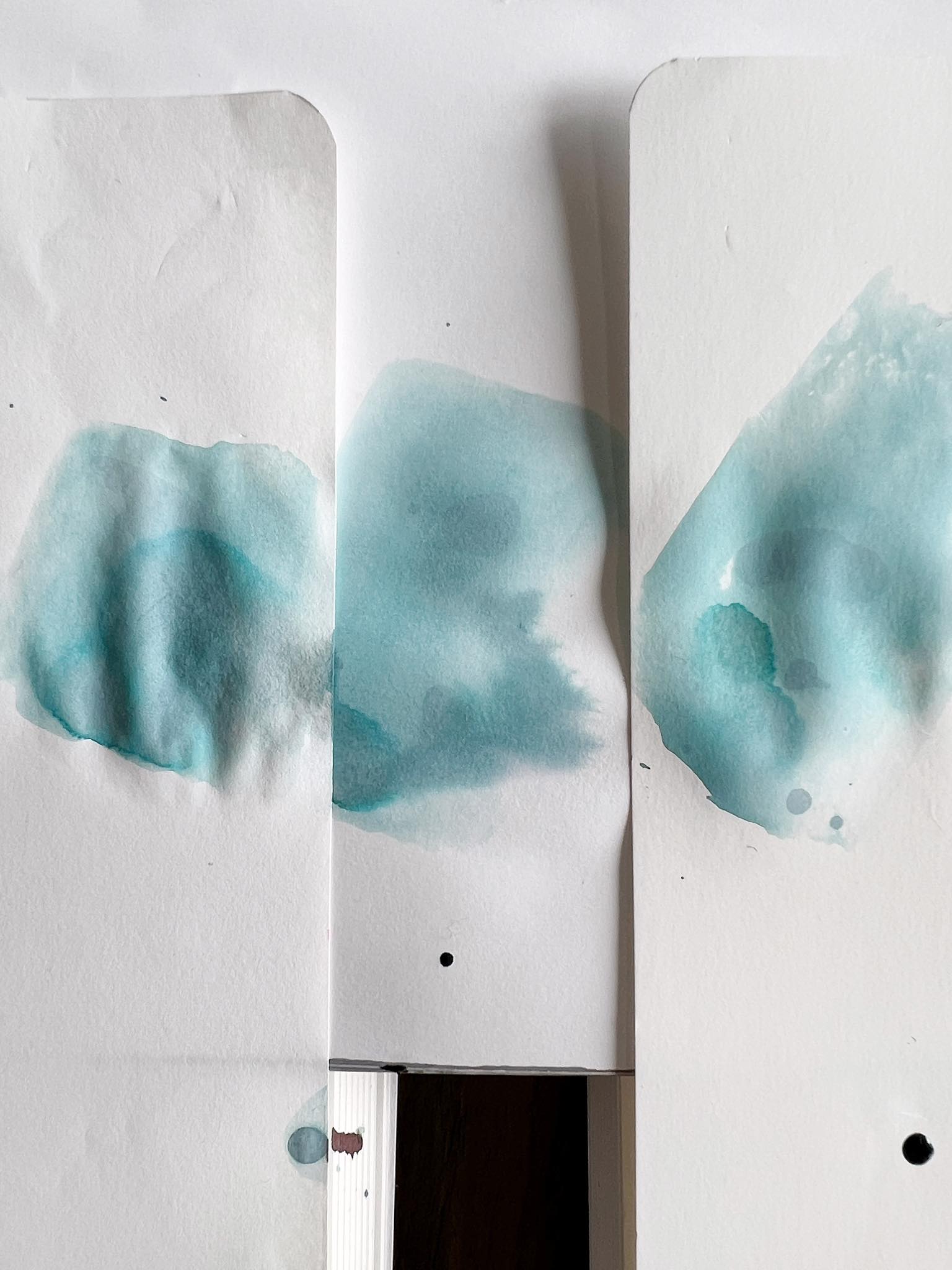
From left: Tomoe River 7, Rasa, Cosmo Air Light
Of course, improvements to some elements of the paper mean tradeoffs in others, so I want to make sure you're aware of this paper's weaknesses.
The core tradeoff is slightly reduced colour performance. You'll find that certain multichromatic inks, in particular, will be slightly duller on Rasa than they would be on Cosmo Air Light and other microcoat equivalents — this stems from the drastically increased rate at which the paper absorbs ink. Given that this paper is primarily oriented towards work and study use, we felt this was an appropriate hit to take for increased practicability.
This isn't to say, of course, that colours look completely flat. You can still get some astonishing results with a little practice:

The paper's quicker dry and increased resistance to hand oils also comes at a cost: if your weapons of choice are sharp italics, or edged blades and scrapers, Rasa presents a slightly odd, squishy handfeel and increased feedback that may make writing and calligraphing feel a little strange. This doesn't affect the paper's ability to handle these nibs, but it will take some getting used to.
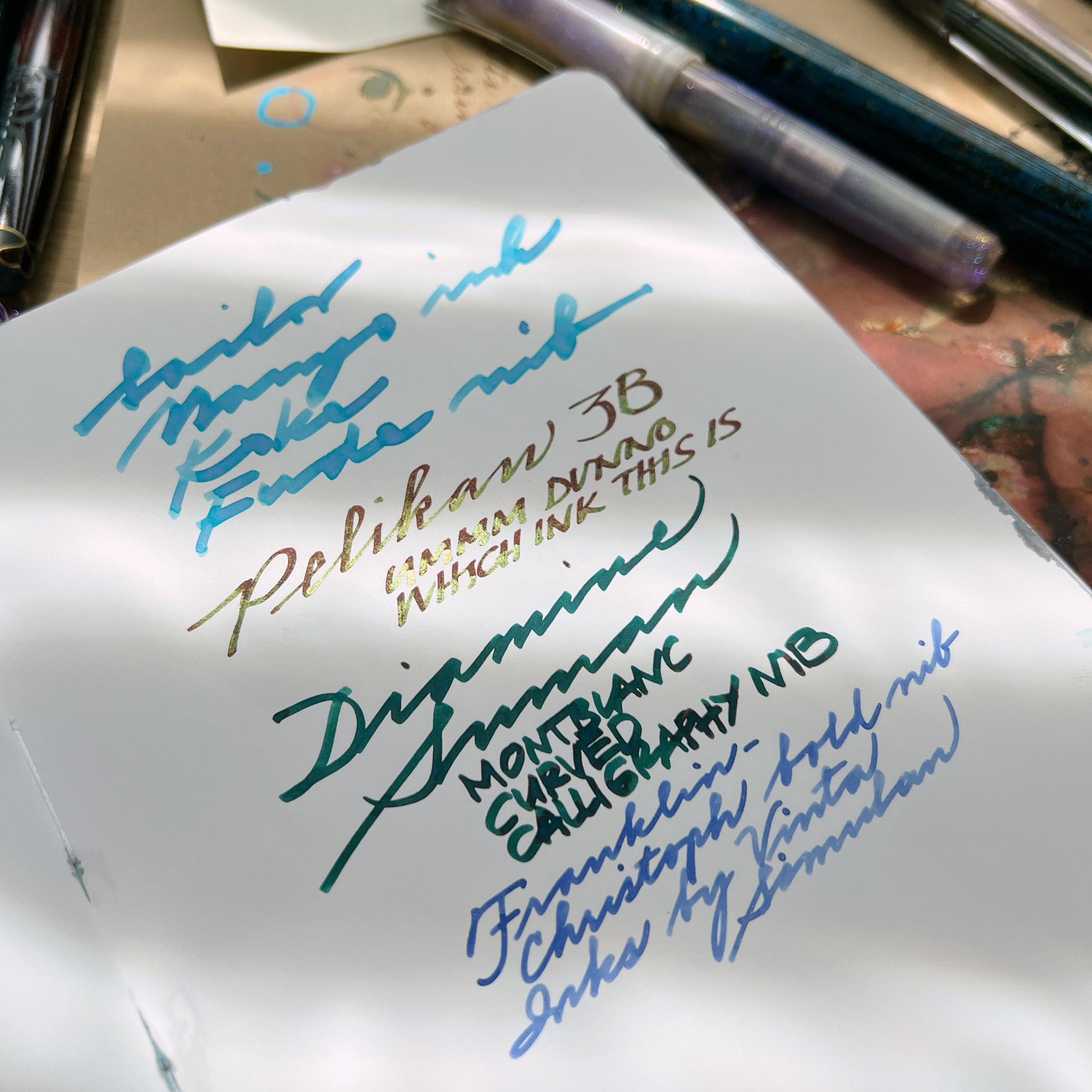
Rasa with various nibs and inks. Leigh often doesn't remember what inks are in her pens, so we'll work with what we've got.
Our first deployment of Rasa as a product will be in the familiar folio notebook format, given its inherent lean towards work environments. Similar to all our other folios, this notebook comes in blank, lined, and cross grid paginated rulings, so you have the flexibility to pick what you need. I've also kept the pricing of it very competitive — because we're now able to move to larger quantities per production run, this will be our cheapest folio notebook yet, coming in at around 22 USD per piece.
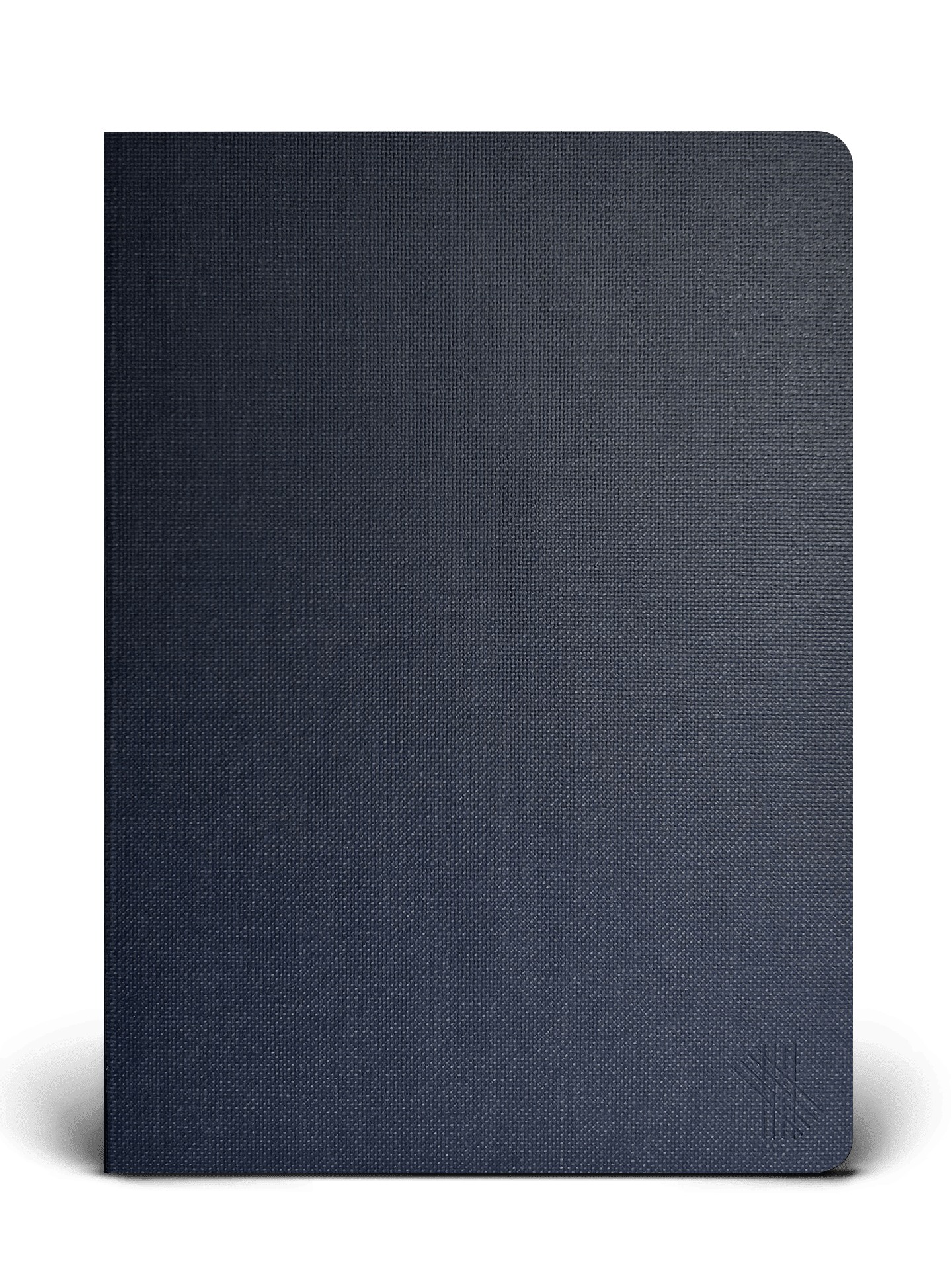
The new Rasa folio notebooks are up on the website, and ready to be ordered at any time. I'm excited for you to try them out. And, of course, we'll have samples of this paper ready to try when you come down to our booth at the San Francisco pen show next weekend.
Speaking of San Francisco...
It's showtime
...we'll be at the show. But you already knew that.
All our new releases will be available to view and try, including the pocket folio notebooks in Spica Bond, and of course our new Rasa paper. I'll be at the Musubi booth as always, so come over and say hi! And please come early if you're planning on getting a handbound journal; we're carrying extremely limited quantities of them as we need the cargo space to focus on the new lineup.
One more quick note before we move on: as you know, we're one of the scarce few bookbinders with Tomoe River 7 (commonly known as the old Tomoe River) remaining in any format. While we still have folio notebooks in this paper, their quantities have become increasingly limited.
Therefore, in order to make sure access to these notebooks is kept fair for all, including those who can't attend pen shows, we will not be bringing ready stock of our TR7 folio notebooks to San Francisco. We've always tried our level best to ensure that customers who can't make our pen show appearances aren't unfairly prejudiced against, and I trust you'll understand that our commitment to this policy remains unchanged.
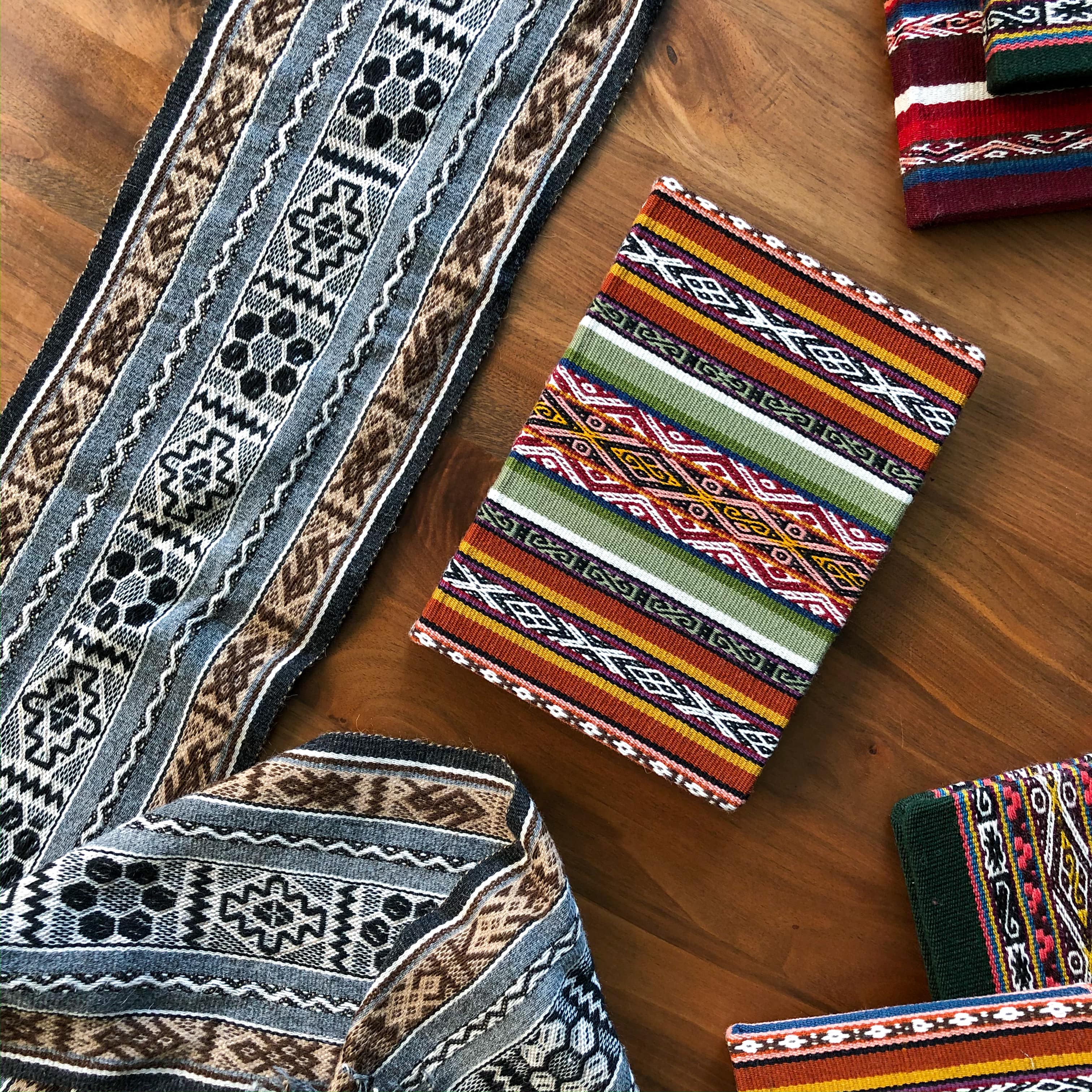
Improving availability on our indigenous releases
Finally, an update on the One Musubi front.
Our indigenous offerings have continued to remain out of availability following the pandemic, largely due to complications in the way these fabrics were ordered and shipped to us. In addition, whenever these releases are restocked they tend to vanish unbelievably quickly from the website as our regulars snap them up, meaning by the time you click through the newsletter to the product page it's often too late to pick up a diary of your own.
This is not ideal, so we're taking a permanent step towards fixing both these issues at once.
We've recontracted with our Peruvian artisans, but in a completely different format now. Where previously we did fabric batches in one or two patterns, made diaries in advance, and cut off orders the instant supply capacity was reached, we're now moving to a made-to-order system on our Quechua diaries.
What this means in practice is that there will be six permanent patterns, each given a traditional name by the artisan family that made it. We will keep ready stock of all six patterns and offer them year-round on the website, making each diary as you order it. There'll be the usual wait of two weeks between order and shipment, as with our other handbound journals, but in return there will no longer be availability issues — our Quechua diaries will now always be in stock, and ready to order at any time.
This means more constancy for our artisans in terms of income, and it also means benefits for you: no longer will you have to engage in a mad rush against other Musubi fans with every newsletter containing a Quechua drop, as you're now free to order at your leisure, whenever you like.
Our first batch of these six new patterns is already underway with our weavers, and I expect to begin offering diaries under this new framework as early as November this year — perfectly in time for the holiday season and your gift-giving needs.
I'll update you on this again via newsletter when we've finished this switchover. For now, please bear with us for a little while longer.
Parting is such sweet sorrow
Alright, I think that just about wraps it up — anything more would be information overload. There'll be new surprises to talk about as we head into the holiday season, so look out for that update coming shortly.
Oh, and one more thing just for all of you. What if we could create a paper that was the polar opposite of Rasa: configured not for work, but for colour, and art, and dreams?
We call it Halus. It's not quite ready for primetime, but come to the booth and ask for it by name. I'll let you try some if you promise not to get mad at me for not having it ready in notebook form just yet.
Meanwhile, you know the drill — stay well, and keep on lighting candles in the dark.
See you soon.
much love
Daryl
on behalf of everyone here at Musubi